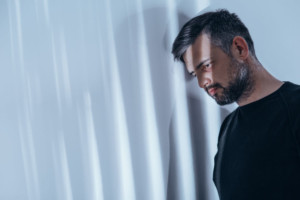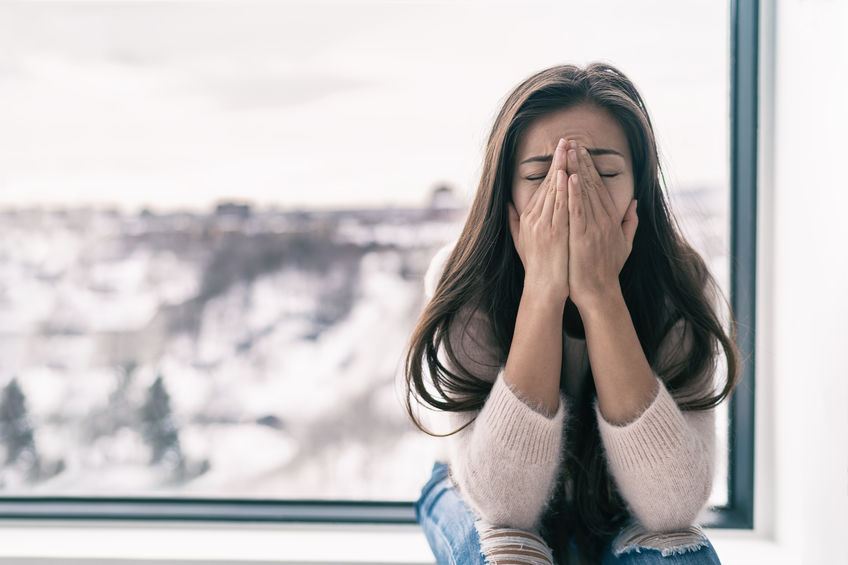Oh bother, another blah gray winter morning. I can’t think of a good reason to get out of bed. I might just skip breakfast and sleep another fifteen minutes. Does it really make any difference? Too many people on the road right now anyway, I don’t think showing up 15 minutes late will matter. I don’t understand how people can show up to work, all happy and full of energy, while I can hardly get going. All I want to do is sleep and eat. Funny, seems like these gray days never end, why do I live here? Winter is such a struggle …
 For those of us living in Minnesota, the ‘dead of winter’ brings significantly less daylight in terms of both hours and intensity. For the three month period of November, December, and January we suffer through a paltry total of 850 daylight hours (sunrise to sunset) – only 61% of the 1,400 daylight hours we receive from May through July. In addition, the intensity of winter sunlight is much less than in summer as the angle of the sun’s rays are much less direct (21 degrees during the winter solstice compared to 68 degrees during the summer solstice).
For those of us living in Minnesota, the ‘dead of winter’ brings significantly less daylight in terms of both hours and intensity. For the three month period of November, December, and January we suffer through a paltry total of 850 daylight hours (sunrise to sunset) – only 61% of the 1,400 daylight hours we receive from May through July. In addition, the intensity of winter sunlight is much less than in summer as the angle of the sun’s rays are much less direct (21 degrees during the winter solstice compared to 68 degrees during the summer solstice).
Many of us experience changes in our moods, appetites, and sleeping patterns as a result of the change in the seasons. Yet for an estimated 5% of the population, this dramatic seasonal change results in an annual bout with depression known as Seasonal Affective Disorder, or SAD, from late fall to early spring.
What Is Seasonal Affective Disorder (SAD)?
SAD is a type of depression, characterized by meeting the same criteria for major depression, with symptoms worsening during specific seasons for at least two years. SAD is most common during winter months*, in latitudes where hours of daylight vary widely from summer to winter. Those struggling with SAD exhibit symptoms including:
- Low energy and fatigue
- Feeling depressed most of the time
- Overeating and a craving for high-carbohydrate foods
- Difficulty sleeping, or sleeping too much
- Social withdrawal
- Lack of interest in what were once favorite activities
- Feelings of hopelessness and worthlessness
What Are The Causes of SAD?
While we don’t fully understand what causes SAD, it seems to be triggered by the diminished daylight during the winter months. Research suggests that diminished daylight may cause the following:
- Decrease in Serotonin levels – Serotonin is a brain chemical that helps regulate one’s mood and is impacted by decreased daylight.
- Increase in Melatonin – Melatonin is a hormone that contributes to the control of normal sleep-wake cycles.
- Circadian rhythm – significant drops in daylight during the winter may disrupt the body’s internal clock, contributing to the symptoms of depression.
Treatments for SAD
Seasonal Affective Disorder (SAD) symptoms are similar to other forms of depression, it makes sense that effective treatments such as cognitive behavior therapy and medications might play a part of the treatment of SAD, complemented with treatments more specific to SAD, such as light therapy and the prescribing of vitamin D.
- Cognitive Behavior Therapy (CBT) – A talk therapy designed to help patients cope with the stress and complications. For SAD, CPT is often modified to focus on minimizing negative thoughts regarding the winter season, along with instigating pleasant indoor and outdoor activities to improve the patient’s experience during the winter months.
- Medications – Medications more specific to SAD include selective serotonin reuptake inhibitors (SSRI’s) that help to restore the levels and positive impact of serotonin, resulting in better control of one’s mood. Doctors may also recommend an antidepressant such as Bupropion (in extended release form) during the winter months.
- Light Therapy – Light therapy has been a primary treatment for SAD since the 1980’s, where a patient sits facing a bright light box (10,000 lux) for 30 minutes every morning from fall to spring, helping to restore melatonin and serotonin levels, and to normalize circadian rhythms.
- Vitamin D – Studies testing the effectiveness of vitamin D in the treatment of SAD has produced mixed findings, but vitamin D is often recommended for SAD because of the many potential benefits and very few negative side effects.
- Self-Care Strategies – Self-care provides a strong foundation for good mental health. Healthy diets, exercise, adequate sleep, a positive daily routine, and social interaction are a complement to any and all of the treatments above.
As with other types of depression, SAD can get worse and lead to further complications if not treated. If you are experiencing symptoms of SAD, consider scheduling a teletherapy appointment as soon as possible to come up with a treatment plan that can help get through the dead of winter.
* While less common, some people do have an opposite pattern of SAD, where symptoms worsen in the spring and get better by early fall.
How to Start the Healing
Beginning the process is easy. Learn more about our Providers (Click Here).
For Teletherapy details (Click Here) or Teletherapy instructions (Click Here)
Call us at 952-224-8990 to make an appointment.






